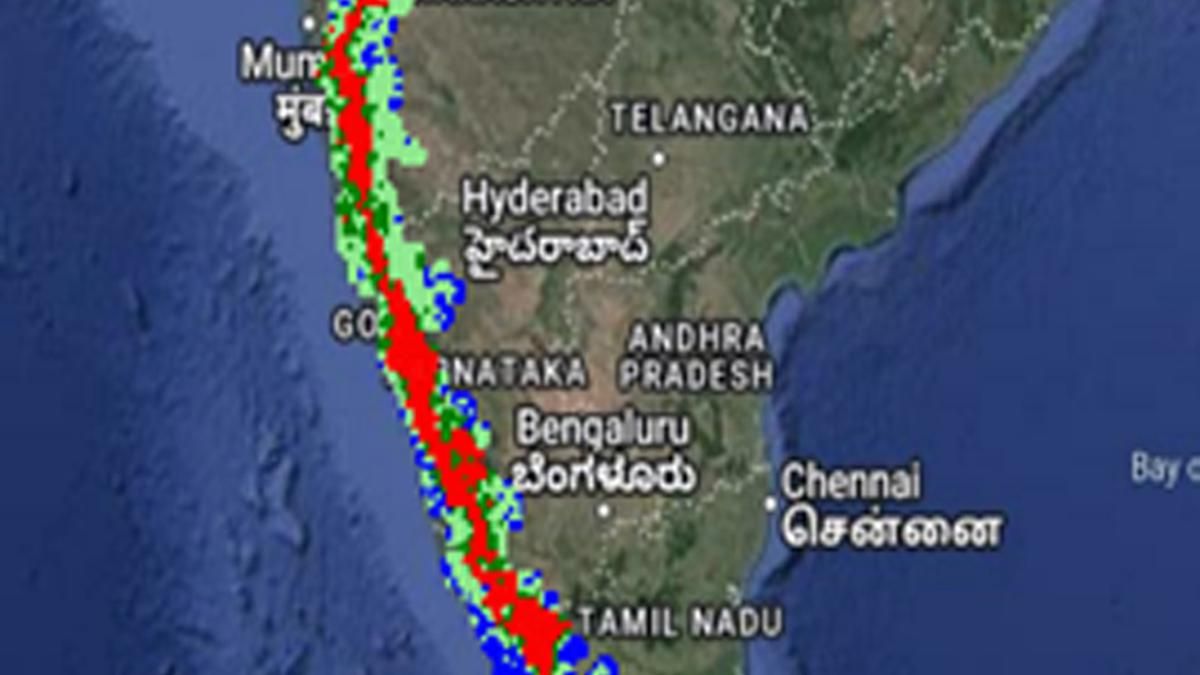
Western Ghats lost 5% evergreen forest cover, shows analysis
The Hindu
Western Ghats Spatial Decision Support System (WGSDSS) designed by IISc reveals 5% loss of evergreen forest, 4.5% increase in built-up cover, 9% in agriculture area. Fragmentation analysis shows interior forest constitutes only 25% of forest landmass. System designed to enhance governance transparency, meet societal needs & help in prudent management of ecologically & hydrologically vital Sahyadri hill ranges. 63,148 km2 area under very higher ecological fragility, 27,646 km2 under high ecological fragility, 48,490 km2 as moderate & 20,716 km2 as low ecological fragility. System & findings help in decision making, ecological research, students & environment activists to understand significance of region. WGSDSS to help manage Western Ghats' ecological fragility & conserve area.
The Western Ghats, which is among 36 global biodiversity hotspots, saw a loss of 5% evergreen forest cover with an increase of 4.5% built-up cover, and 9% agriculture area, according to the spatiotemporal analyses of land use, highlighting anthropogenic induced developmental thrust. Fragmentation analyses also highlight that interior forest constitutes only 25% of the forest landmass, depicting the fragmentation pressure, impacting local ecology.
These revelations come from the Indian Institute of Science’s Energy and Wetlands Research Group launched the Western Ghats Spatial Decision Support System (WGSDSS), which has been designed as part of the ongoing ecological research in the Western Ghats. This, researchers say, enhances governance transparency while meeting societal needs, which helps in the prudent management of ecologically and hydrologically vital Sahyadri hill ranges.
Web-based spatial decision support system (WSDSS) is designed by integrating free and open source software (GeoServer, PostgreSQL, GeoTools, OpenLayers, and integration of spatial information of Open Geospatial Consortium (OGC) standards to carry out a multiple criteria analysis. Features such as Web Map Service (WMS), and Web Feature Service (WFS) would help in accomplishing effective dissemination of the ecological, socio, economic, biodiversity, and environmental information, said the researchers.
Ecological sensitivity or fragility refers to permanent and irreparable loss of extant life forms or significant damage to the natural processes of evolution and speciation with the alterations in the ecological integrity of a region. Grid wise analysis portrays 32% of the area under ESR-1 (ecologically sensitive region) denoting very high ecological fragility, 16% (373) grids under ESR-2, which has potential to be ESR-1, 34% (789) and 18% (412) under ESR-3, and 4 respectively, with moderate and least ecological fragility. ESR analysis depicts 63,148 km2 area under very higher ecological fragility, 27,646 km2 under high ecological fragility, 48,490 km2 as moderate and 20,716 km2 as low ecological fragility.
Dr. T.V. Ramachandra from the Energy and Wetlands Research Group, Centre for Ecological Sciences, IISc said, the comprehensive knowledge of the ecological fragility of a region is quintessential for evolving strategies for conserving the area, which entails identifying factors responsible for ecological sensitiveness, including landscape dynamics, and visualising future transitions to mitigate the problems of haphazard and uncontrolled development approaches.
“The region witnessed large-scale land cover changes during the past century due to unplanned developmental activities with industrialisation and globalisation. This necessitates implementing mitigation measures involving stakeholders to address the impacts through location-specific conservation measures. Framing conservation and sustainable developmental policies entail delineation of ecologically sensitive regions by integrating bio-geo-climatic, ecological, and social factors representing dynamics of socio-ecological systems, impacts, and drivers. Analyses of ecologically sensitive regions in the Western Ghats, one among 36 global biodiversity hotspots using temporal remote sensing data, highlight serious concerns on the status of forests and conservation options,” he said, adding that the deforestation and mismanagement of these pristine ecosystems evident from deforestation and the current extent of forest ecosystems have been threatening water security with severe challenges to people’s livelihood in peninsular India.
The researchers hope that the system and its findings will help in decision making at decentralised levels, ecological researchers, students, and environment activists about the significance of the region.











